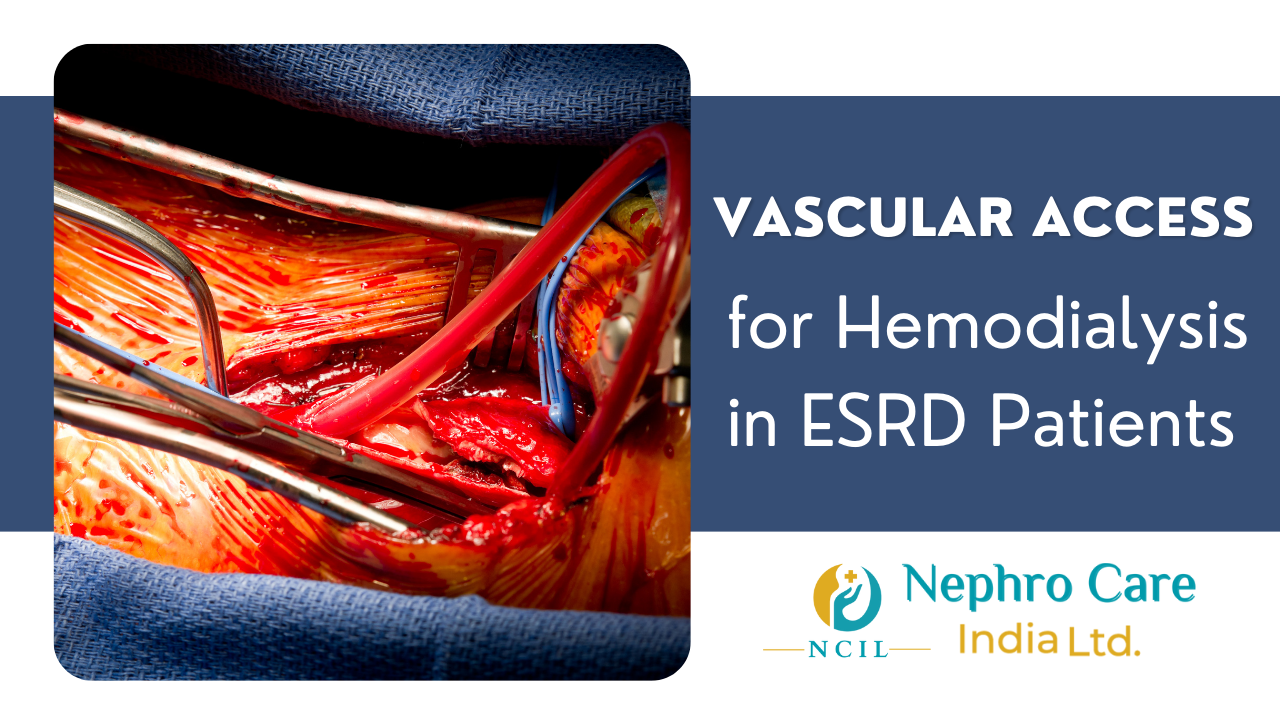
When it comes to managing End-Stage Renal Disease (ESRD), the choice of vascular access is a critical decision for ensuring successful hemodialysis. Each type of vascular access—whether it’s an AV fistula, AV graft, or catheter—acts as a vital lifeline, filtering and cleansing the blood. Understanding the different access types, benefits, and potential complications is key to ensuring the best treatment outcome. This guide will walk you through the various types of vascular access, highlighting what makes each option unique and how to care for them effectively.
An arteriovenous fistula (AV fistula) is the most preferred method of vascular access for hemodialysis, known for its longevity and lower risk of complications. This surgical procedure involves connecting an artery and a vein, most commonly in the forearm, which makes the vein larger and stronger over time. This makes it suitable for repeated needle insertions during dialysis.

Benefits of AV Fistula:
Procedure and Maturation:
A surgeon usually performs minor surgery under local anesthesia to create the fistula. After the procedure, the vein gradually thickens as blood flow increases. However, it can take several weeks or months for the fistula to develop fully and be ready for use in dialysis.

Preferred Locations:
For patients with veins that are too small or weak for an AV fistula, an AV graft is a suitable alternative. A synthetic tube is surgically placed under the skin, typically in the arm, connecting an artery and a vein. This allows for blood flow during dialysis and can be used within two to three weeks after placement, unlike a fistula, which requires more time to mature.
Disadvantages of AV Grafts:
Though grafts offer a quicker solution, especially for patients who cannot wait for a fistula to mature, they come with a higher risk of complications.
When immediate dialysis is needed, such as in cases of acute kidney failure, temporary central venous catheters may be used. These catheters are inserted into large veins, such as the internal jugular vein in the neck, the subclavian vein in the chest, or the femoral vein near the groin. The double-lumen catheter allows blood to flow in and out for filtration during dialysis.

Advantages:
Drawbacks:
These catheters are typically used for short periods, such as while waiting for an AV fistula or graft to be ready for use.
For patients who are unable to have an AV fistula or graft, tunnelled permanent catheters, also known as permcaths, offer a longer-term solution. These catheters are inserted through the skin into the internal jugular vein and are tunnelled under the skin to reduce the risk of infection. Permcaths can be used for extended periods, unlike temporary catheters.

When to Use:
Permcaths are generally used for patients who have experienced failed fistula or graft surgeries. They are also an option for patients for whom these alternatives are not feasible. While more comfortable and safer than temporary catheters, permcaths still carry higher risks of infection and clotting compared to AV fistulas.
Vascular access, particularly an AV fistula, serves as a dependable site for removing, filtering, and returning blood during dialysis. For patients who may need dialysis for life or until a kidney transplant is possible, having a durable and efficient access point is essential. Early preparation for access after a kidney failure diagnosis ensures seamless dialysis treatment without interruption.
To ensure the vascular access functions properly, patients must care for the access site. It is also important that they learn to prevent complications like infection or clot formation. Regular monitoring and proper hygiene practices are key to extending the life of the access and avoiding treatment disruptions. Essential aftercare practices include:
With appropriate care, an AV fistula can provide years of reliable access to dialysis. This reduces the likelihood of complications and improves the patient’s overall health.
Vascular access is a lifeline for ESRD patients undergoing haemodialysis. Although AV fistulas are the preferred option due to their longevity and lower risk of complications, the selection of the type of access (AV fistula, graft, or catheter) depends on the individual’s circumstances. When fistulas are not viable, grafts and catheters offer alternative options for dialysis access. However, regardless of the chosen access type, it is crucial to prioritize proper care and maintenance to ensure the effectiveness and longevity of dialysis treatment.